Abstract
There is a growing awareness of vegetation's role as a source of potentially reactive hydrocarbons that may serve as photochemical oxidant precursors. This study assessed the influence of light and temperature, independently, on monoterpene emissions from slash pine (Pinus elliottii Engelm.). Plants were preconditioned in a growth chamber, then transferred to an environmentally controlled gas exchange chamber. Samples of the chamber atmosphere were collected; the monoterpenes were concentrated cryogenically and measured by gas chromatography. Five monoterpenes (α-pinene, β-pinene, myrcene, limonene, and β-phellandrene) were present in the vapor phase surrounding the plants in sufficient quantity for reliable measurement. Light did not directly influence monoterpene emission rates since the emissions were similar in both the dark and at various light intensities. Monoterpene emission rates increased exponentially with temperature (i. e. emissions depend on temperature in a log-linear manner). The summed emissions of the five monoterpenes ranged from 3 to 21 micrograms C per gram dry weight per hour as temperature was increased from 20 to 46 C. Initially, emission rates from heat-stressed needles were similar to healthy needles, but rates decreased 11% per day. Daily carbon loss through monoterpene emissions accounted for approximately 0.4% of the carbon fixed during photosynthesis.
Full text
PDF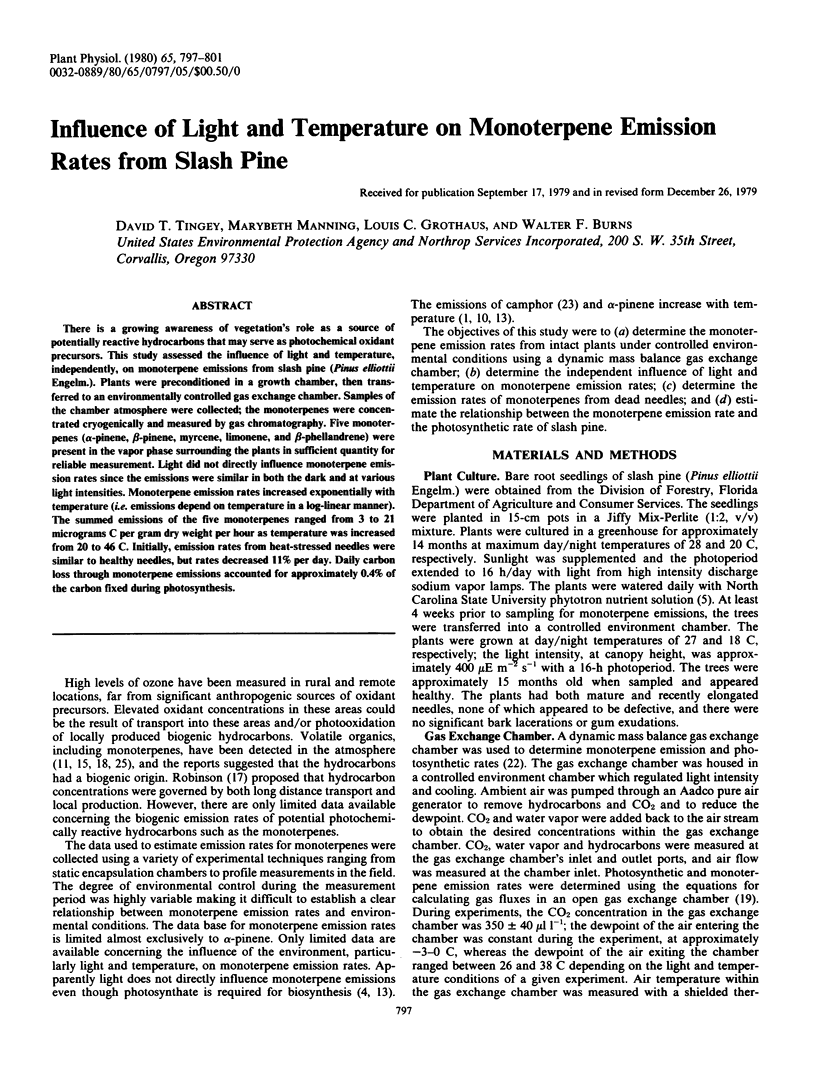
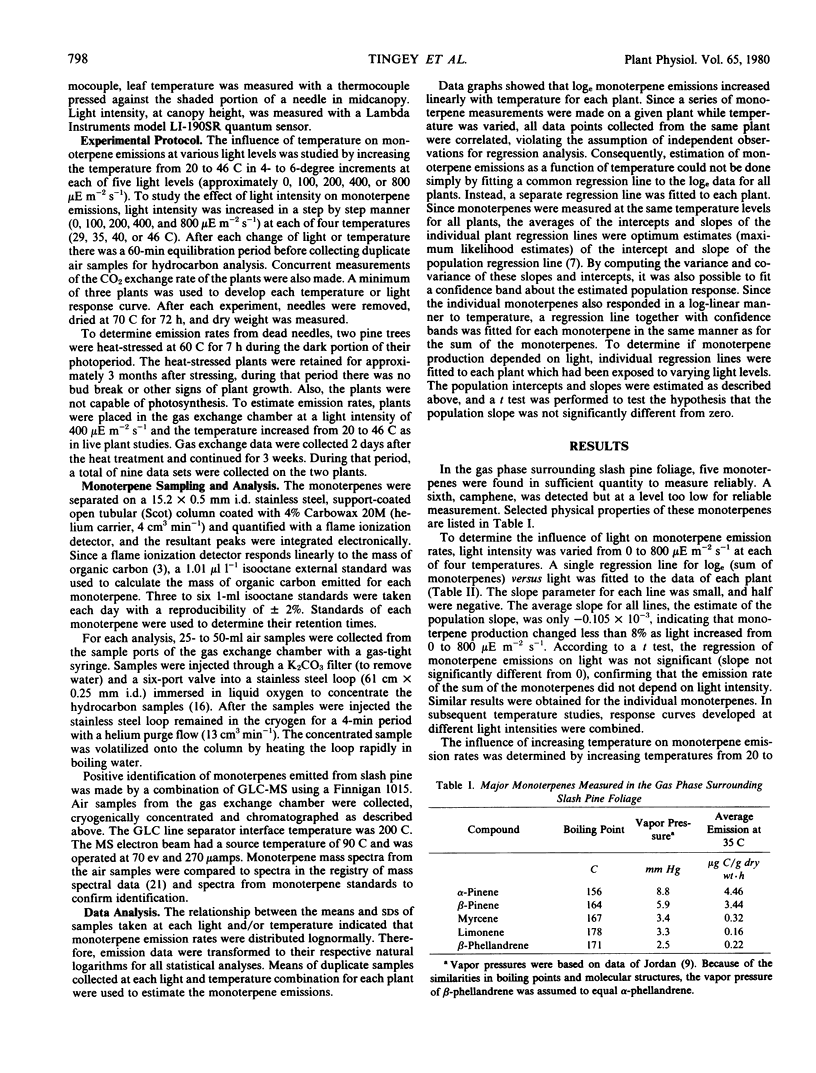
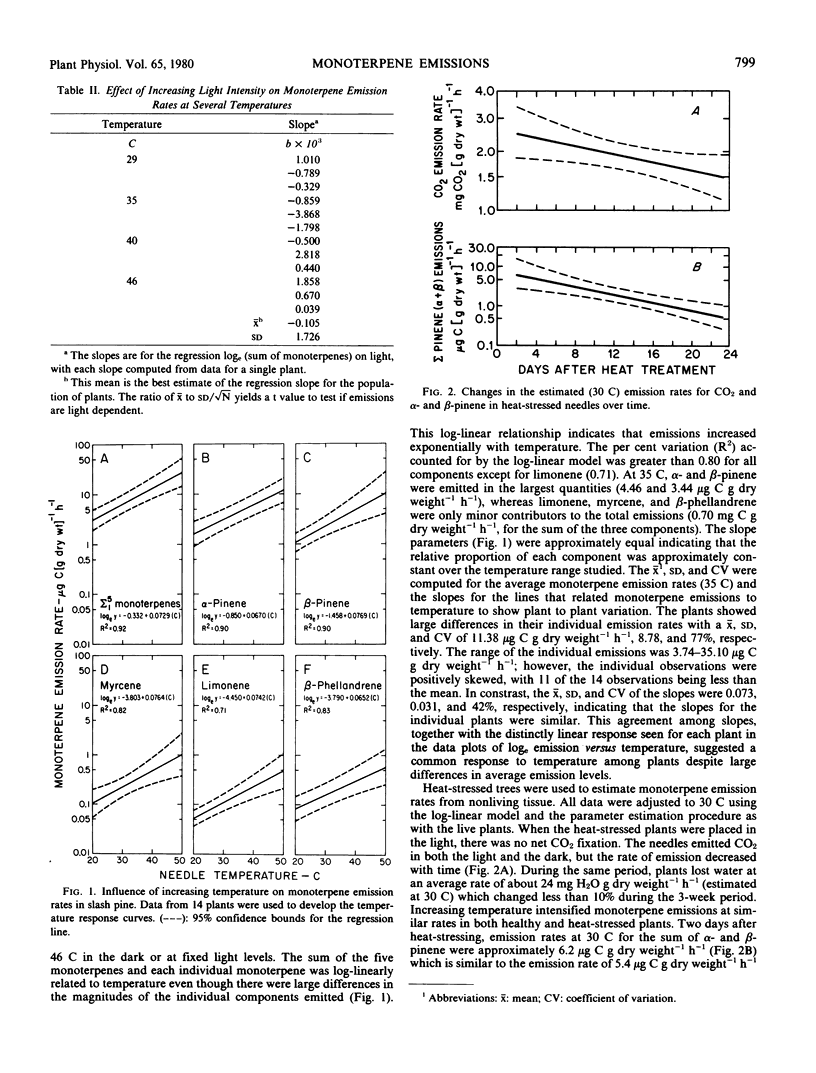
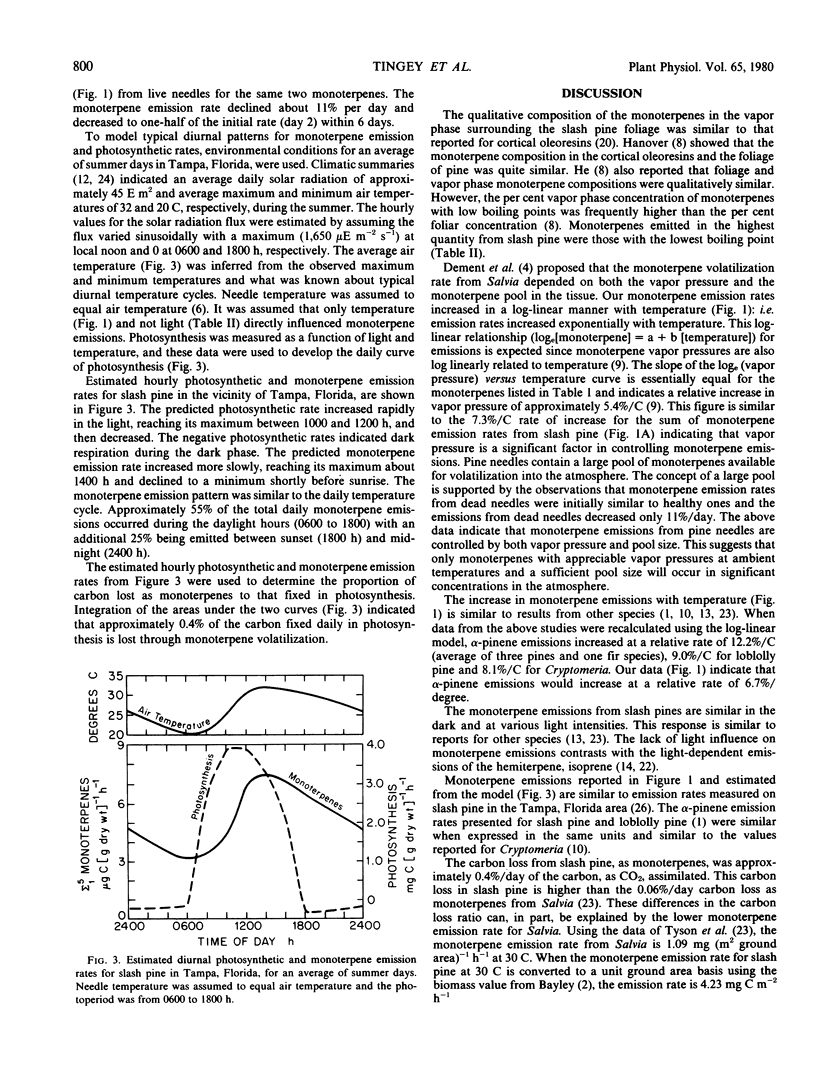
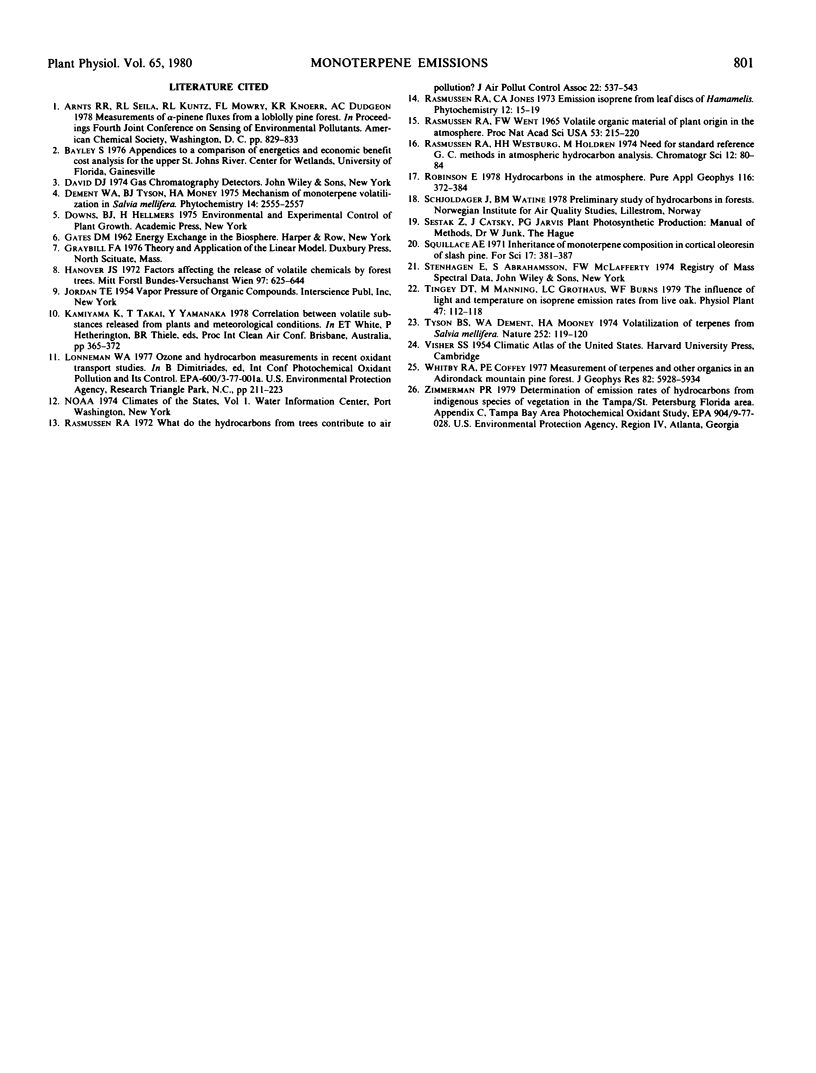
Selected References
These references are in PubMed. This may not be the complete list of references from this article.
- Parry B. J., Schwab J. M. Letter: Biosynthesis of cephalotaxus alkaloids. I. Novel mode of tyrosine incorporation into cephalotaxine. J Am Chem Soc. 1975 Apr 30;97(9):2555–2557. doi: 10.1021/ja00842a050. [DOI] [PubMed] [Google Scholar]
- Rasmussen R. A., Went F. W. VOLATILE ORGANIC MATERIAL OF PLANT ORIGIN IN THE ATMOSPHERE. Proc Natl Acad Sci U S A. 1965 Jan;53(1):215–220. doi: 10.1073/pnas.53.1.215. [DOI] [PMC free article] [PubMed] [Google Scholar]
- Rasmussen R. A., Westberg H. H., Holdren M. Neef for standard referee GC methods in atmospheric hydrocarbon analyses. J Chromatogr Sci. 1974 Feb;12(2):80–84. doi: 10.1093/chromsci/12.2.80. [DOI] [PubMed] [Google Scholar]
- Rasmussen R. A. What do the hydrocarbons from trees contribute to air pollution? J Air Pollut Control Assoc. 1972 Jul;22(7):537–543. doi: 10.1080/00022470.1972.10469676. [DOI] [PubMed] [Google Scholar]


